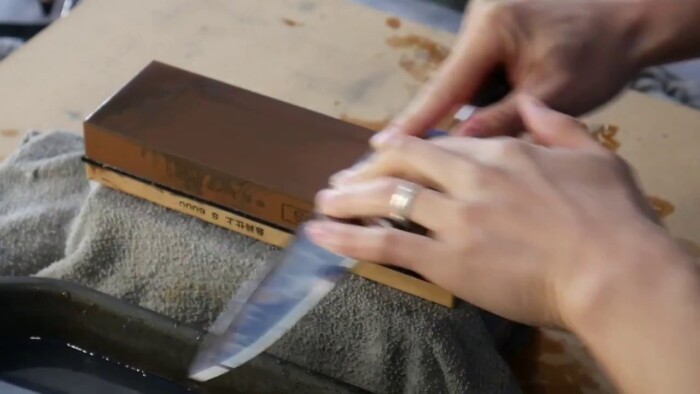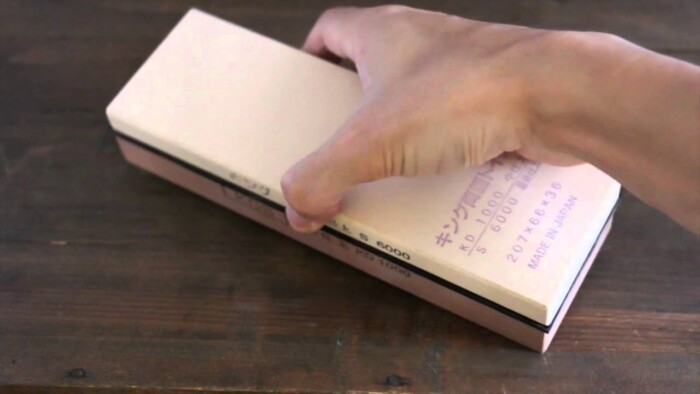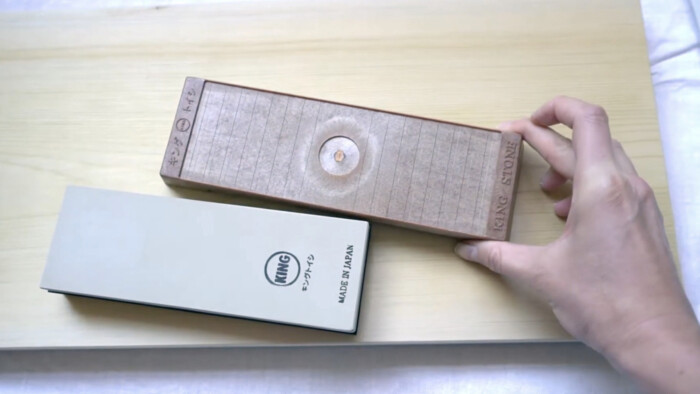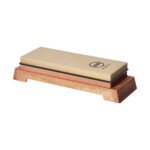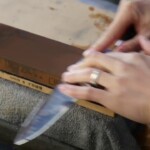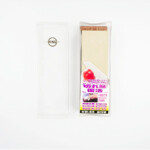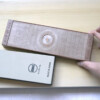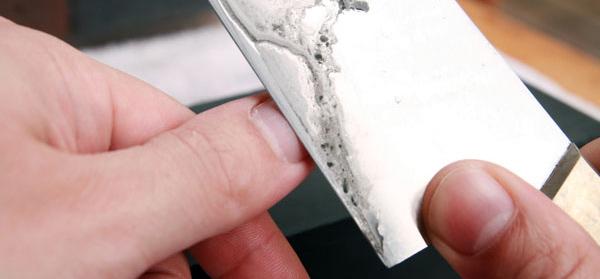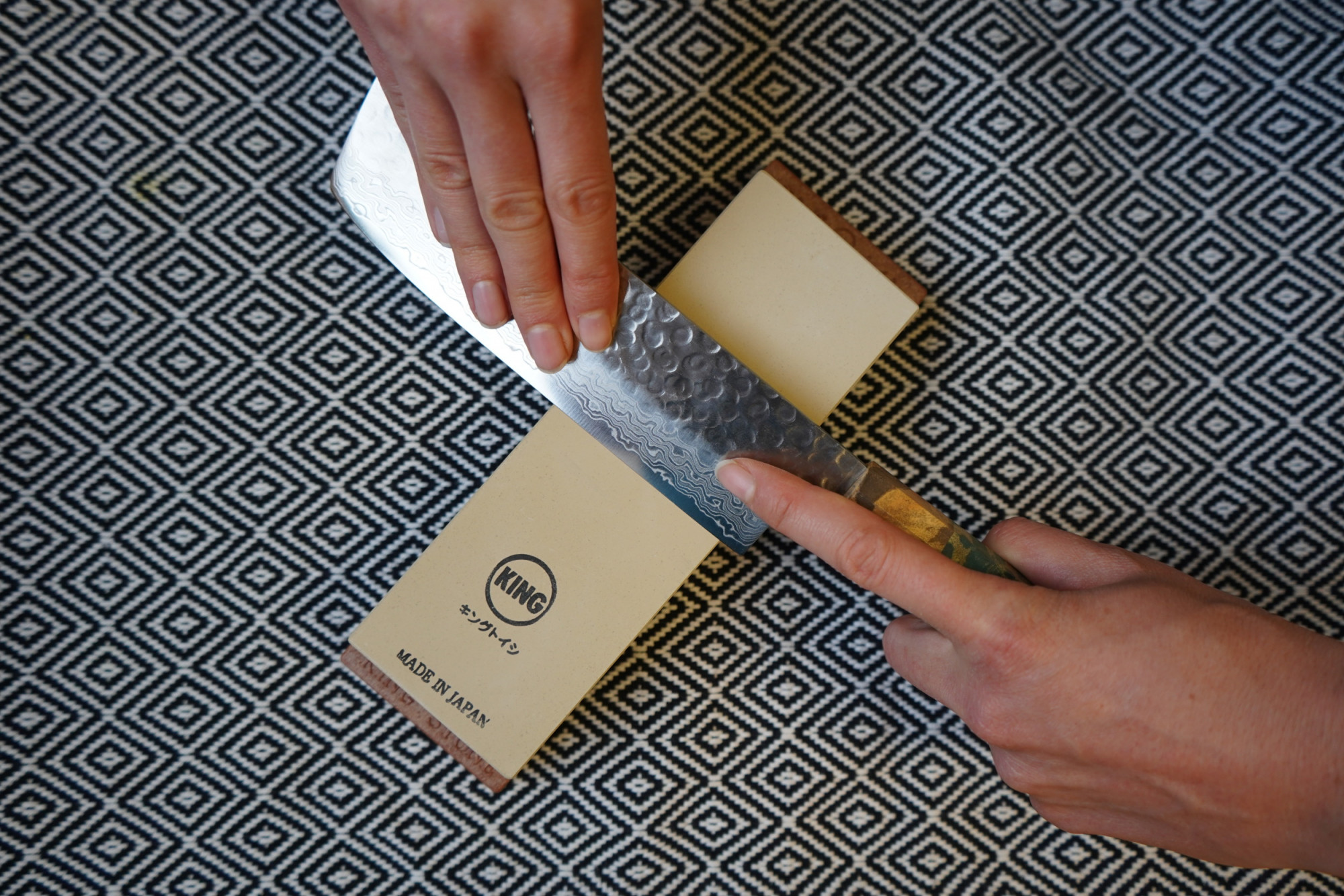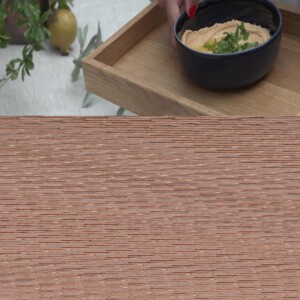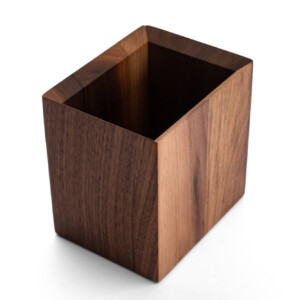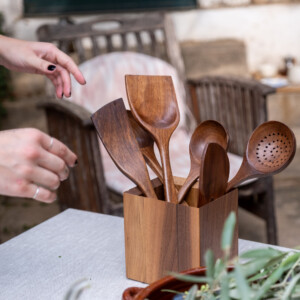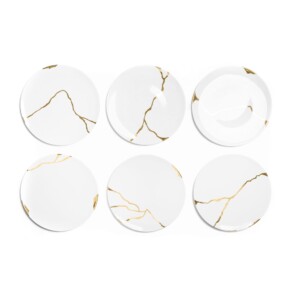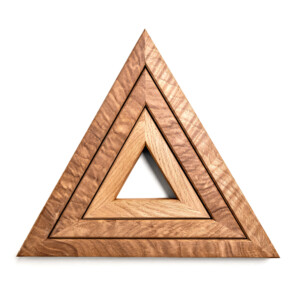Beschreibung des Produkts
Der King KW-65 1000/6000
Dieser kombinierte Wasserstein (Schleifstein) mit den Körnungen 1000 und 6000 macht aus einer stumpfen Schneide eine scharfe Schneide mit der 1000er Seite. Mit der 6000er Seite wird der Klingenrücken und die Fase hochglanzpoliert. Ideal für die Bearbeitung von stumpfen, nicht beschädigten Klingen. Die zwei verschiedenen Körnungen in einem doppelseitigen Stein machen Kombinations-Wassersteine zu einer hervorragenden, kostengünstigen Möglichkeit, eine Reihe von Körnungen zu besitzen. Hergestellt aus Schleifpartikeln, die in einem Bindemittel suspendiert sind. Der Stein deckt zwei aufeinanderfolgende Stufen im Schärfprozess ab. Die Abmessungen des Schleifsteins betragen 207 x 66 x 36 mm. King-Steine haben sich weltweit einen Namen gemacht. Dies ist einer der angesehensten Schleifsteinhersteller mit Sitz in Matsunaga, Osaka in Japan. Dieser Schärfstein hat auf der einen Seite eine Oberfläche mit mittlerer Körnung und auf der anderen Seite eine Oberfläche mit feiner Körnung. Dies ist die perfekte Steinkombination für neue oder gelegentliche Freihandschärfer.
Japanische Wetzsteine
Im Gegensatz zu anderen synthetischen Schärfsteinen, die aus einem einzigen Schleifmittel bestehen, bestehen diese japanischen Wassersteine aus Aluminiumoxid, Karbid und Nitridpartikeln, die miteinander verschmolzen sind. Diese Mischung wird dann mit einem tonartigen Bindemittel vermischt und bei hohen Temperaturen gebrannt, um den Schleifstein zu formen. Der so entstandene Stein ist weich, schärft aber sehr schnell. Die weiche Bindeerde sorgt dafür, dass sich die Schleifpartikel sehr leicht lösen, wenn der Stein in Wasser eingeweicht wird. Wenn Sie einen synthetischen japanischen Schleifstein kaufen, haben Sie die Garantie, dass Sie einen Stein mit einheitlicher Körnung erhalten, der beim Schärfen gleichbleibend hochwertige Ergebnisse liefert und dessen Qualität nicht von Stein zu Stein variiert.

